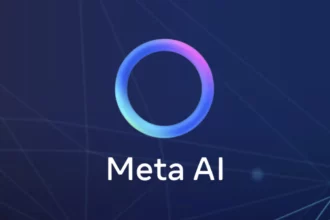Understanding LLM Embeddings Generation
Ah, the wonderful world of LLM generating embeddings! It’s like turning plain text into a fancy set of vectors, ready to be stored and retrieved later on. Imagine it as giving your words a secret code, making them easier to find in a sea of information.
So, let’s dive into how LLM works its magic to generate these embeddings for you. Picture this: you input your text, press a few buttons, and voila! You get a sequence of vectors neatly prepared for storage in a vector database. Pretty cool, right?
Now, when it comes to actually doing this embedding generation task with LLM, there are some key points to keep in mind. First off, you need to select the LLM provider you want to work with. Make sure you have access to at least one model from that provider – no sneaky business here!
Next up, choose the language model that suits your fancy. Think of it like picking the perfect outfit for your data – it needs to look good and work even better! Then comes the fun part: feeding in the text you want transformed into those snazzy vectors. It’s like giving your words a makeover!
Saviez-vous: If you’re having trouble setting up your AI/LLM provider on Orkes console, don’t sweat it! Just head over to the Integrations tab and follow the steps to configure your provider smoothly.
Now, once all that’s done and dusted, what do you get as output? A nice JSON array filled with those precious vectors of indexed data waiting for you to use them however you please. It’s like opening a treasure chest of linguistic gems!
So next time you’re faced with the task of LLM generating embeddings, remember these simple steps: choose your provider wisely, pick the perfect model match, input your text masterpiece…and voila! Your embeddings are ready for their close-up.
Keep reading for more insights on how LLM makes embedding generation a breeze…
Table of Contents
ToggleBest LLM Models for Generating Embeddings
When it comes to selecting the best Large Language Models (LLMs) for generating embeddings, there are several top contenders that stand out in the crowd. These LLM models play a crucial role in transforming text into high-dimensional vectors rich with semantic meaning. Let’s take a look at some of the standout performers in the world of embedding generation:
- BERT (Bidirectional Encoder Representations from Transformers):
- Known for its bidirectional approach, BERT has revolutionized the field of natural language processing by capturing contextual relationships between words. It excels in tasks like text classification and question answering.
- RoBERTa (Robustly optimized BERT approach):
- A close cousin to BERT, RoBERTa takes things up a notch with enhanced training methods and more data, resulting in improved performance across various NLP tasks.
- GPT-3 (Generative Pre-trained Transformer 3):
- While GPT-3 is famous for its text generation capabilities, it also produces top-notch embeddings useful for tasks like language understanding and translation.
- XLNet:
- XLNet stands out for its permutation language modeling technique, which helps capture complex dependencies within sentences and leads to robust embeddings.
- T5 (Text-to-Text Transfer Transformer):
- T5 takes a unique “text-to-text” approach, which simplifies various NLP tasks into text-to-text transformation problems, resulting in versatile and effective embeddings.
Each of these LLM models brings its own flair to the table when it comes to generating embeddings, making them popular choices among developers and researchers alike. So when you’re looking to get those fancy vectors encoding semantic contexts and relationships from your textual data tokens, consider giving one of these top-notch LLM models a spin!
Have you tried working with any of these models before? Do you have a favorite when it comes to creating embeddings? Share your experience or preferences with us!
Step-by-Step Guide to Using LLM for Embeddings
Step-by-Step Guide to Using LLM for Embeddings:
Understand the Foundation: Large Language Models (LLMs) are like the superheroes of AI, excelling in tasks like NLP, image recognition, and audio/video processing. One of their superpowers lies in their ability to generate embeddings – high-dimensional vectors that encode the essence and connections between data tokens. These vectors act as secret codes for your text, making it easier for LLMs to handle huge chunks of information.
- Select your LLM Provider: Like choosing a sidekick, selecting your LLM provider is crucial. Make sure you have access to a reliable model that suits your needs. You don’t want any shady dealings in this superhero team-up!
- Choose the Right Language Model: Just as superheroes need the right gear for battles, you need to pick a language model that fits your data perfectly. This step is like finding the ideal costume – it should look good and perform even better!
- Input Your Text Masterpiece: Time to unleash your creativity! Feed your text into the chosen language model and watch as it works its magic, transforming words into those fancy vectors that pack a punch.
- Benefit from Your Output: Once the transformation is complete, you’ll receive a JSON array filled with those precious embeddings ready for action! It’s like unearthing treasures of linguistic gems in a digital form.
So there you have it – a step-by-step guide on how to harness the power of LLMs for generating embeddings. Remember, with great language models comes great responsibility…and plenty of exciting possibilities!
Choosing the Right Embedding Model for LLM Applications
When it comes to choosing the right embedding model for your Large Language Model (LLM) applications, you’re diving into the core of how these models work their magic. Imagine you have a fancy wardrobe of different outfits, and you need to pick the perfect one that fits just right – that’s what selecting an embedding model is like for your LLM. Just like finding the Robin to your Batman or the peanut butter to your jelly, you want an embedding model that complements and enhances the performance of your LLM seamlessly.
Let’s break down this process step by step:
- Understand the Utilization Workflow: When utilizing embeddings for LLM applications, there’s a streamlined workflow at play. Your input query gets tokenized (breaking it down into individual components), which are then fed into the embedding model. This model works its magic by mapping these tokens to their corresponding embeddings, containing in-context information crucial for enhancing contextual understanding in your LLM.
- Training vs. Fine-Tuning: Whether you’re planning on building an LLM from scratch or fine-tuning a pre-trained one, training or fine-tuning an embedding model is a crucial step in this journey. Training a brand-new embedding model means requiring substantial data, computing power, and time investment – quite a task! Additionally, fine-tuning this model ensures it aligns perfectly with your specific task requirements, like adjusting those last-minute alterations on your superhero cape before saving the day.
- Choosing Your Ideal Embedding Model: Just like selecting ingredients for a perfect recipe or assembling pieces of a complex puzzle, choosing the right embedding model is essential for maximizing the efficiency and effectiveness of your LLM application. Different tasks may require different flavors of embeddings – some models might excel in capturing semantic nuances while others might be better suited for specific NLP tasks like text classification or question answering.
- Fine-Tuning for Precision: Don’t forget about fine-tuning! It’s like giving those finishing touches to a masterpiece painting; adjusting parameters and tweaking settings can make all the difference in how well your embedding model serves your LLM needs accurately.
In conclusion: Selecting that ideal embedding model is akin to finding the missing puzzle piece that completes your grand masterpiece – it may take some trial and error but once you get it right, everything falls into place beautifully! So go ahead, embrace this exciting journey of matching embeddings with your Large Language Model for an AI adventure that’s bound to leave an impression!
Now that we’ve laid out these steps polished as shiny gems in our treasure trove of wisdom on embeddings let’s see how applying them can unlock new doors and possibilities in boosting up our AI game! 🚀
- LLM, such as BERT, can indeed generate embeddings by transforming plain text into vectors for easier storage and retrieval.
- When working with LLM for embedding generation, it’s important to choose a reliable provider and select a suitable language model that fits your data needs.
- By feeding text into the LLM, you can obtain a JSON array containing indexed data vectors, like unlocking a treasure trove of linguistic gems.
- If facing challenges setting up your AI/LLM provider, refer to the Integrations tab for smooth configuration on Orkes console.





